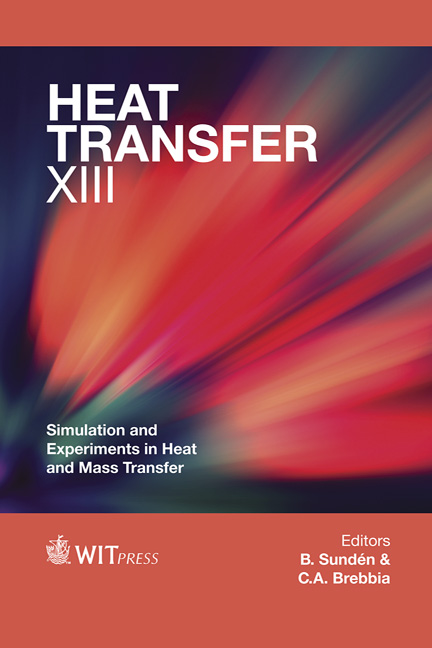The Experimental Determination Of The Thermal Conductivity Of Melting Chocolate: Thermal Resistance Analogies And Free Convection Boundary Conditions
Price
Free (open access)
Transaction
Volume
83
Pages
11
Page Range
505 - 515
Published
2014
Size
813 kb
Paper DOI
10.2495/HT140431
Copyright
WIT Press
Author(s)
M. M. Dreger & L. Pitol-Filho
Abstract
In the food industry, heat transfer phenomena take place in several steps of chocolate preparation. Therefore, a complete thermal analysis of such process requires an accurate determination of a variety of thermo physical properties, including thermal conductivity. To obtain the thermal conductivity, chocolate (2.0 dm³) was stored in a stainless steel rectangular box, provided with a double jacket, with a continuous flow of water at 50°C. The side walls were insulated, and the opposite wall was exposed to natural convection conditions, by using either stagnant air or melting ice, forcing therefore a heat flux. The thermal conductivity of chocolate was calculated by applying thermal resistances, as soon as the system reached steady state operation. In the experiments where the temperature gradient was established by using melting ice, the results are not reasonable, owing to the latent heat transferred to the water-ice mixture. On the other hand, where air free convection was applied, results were according to the literature, ranging from 0.16 W/(m.K) to 0.35 W/(m.K), for different fractions of milk and cocoa in the chocolate compositions. Measurements uncertainties are also discussed. Keywords: chocolate compositions, thermal conductivity, free convection, thermal resistances.
Keywords
chocolate compositions, thermal conductivity, free convection,thermal resistances.





